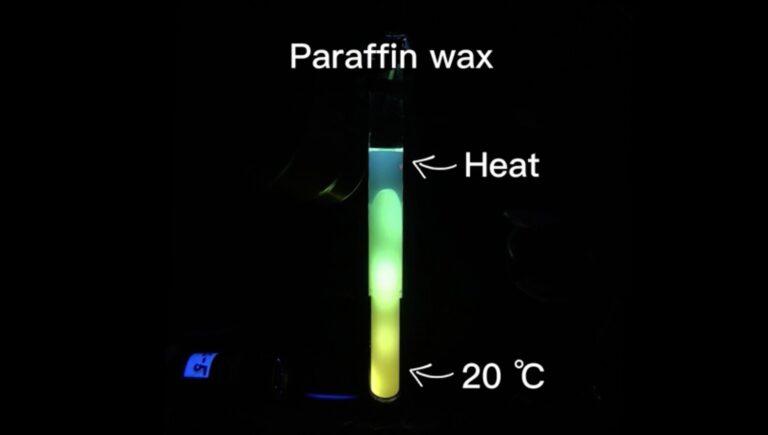
Credit: University of St Andrews
New research led by the University of St Andrews into organic semiconducting materials paves the way for more sustainable temperature sensors that can be used in everyday technology.
Thermally activated delayed fluorescent (TADF) materials are the so-called third generation emitters used in organic light-emitting diodes (OLEDs) and have attracted considerable attention over the past few decades as alternative emitters to the noble metal-containing phosphorescent complexes used in commercial OLEDs such as mobile phones, but their use in other organic electronic applications such as sensors has been less explored.
The new research, led by Professor Eli Zisman-Kolman from the Department of Chemistry and published in the journal Nature Communications, reveals organic TADF compounds used for colorimetric temperature sensing with the broadest spectral and temperature ranges compared to other organic optical temperature probes.
“The temperature changes harnessed in our optical temperature probe are achieved through expert control of the population of emitter molecules and assemblies. Given the broad temperature sensitivity, especially across the physiological temperature range, we foresee that such sensors could be used for a variety of applications, such as rapid temperature detection in packaging,” says Professor Zisman-Kolman.
Further information: Changfeng Si et al., “A temperature sensor with broad spectral range based on a dual-emitting TADF dendrimer system,” Nature Communications (2024). DOI: 10.1038/s41467-024-51231-x
Provided by University of St Andrews
Source: Explore organic semiconductor materials for sustainable temperature sensors (September 23, 2024) Retrieved September 23, 2024 from https://phys.org/news/2024-09-explores-semiconductor-materials-sustainable-temperature.html
This document is subject to copyright. It may not be reproduced without written permission, except for fair dealing for the purposes of personal study or research. The content is provided for informational purposes only.

